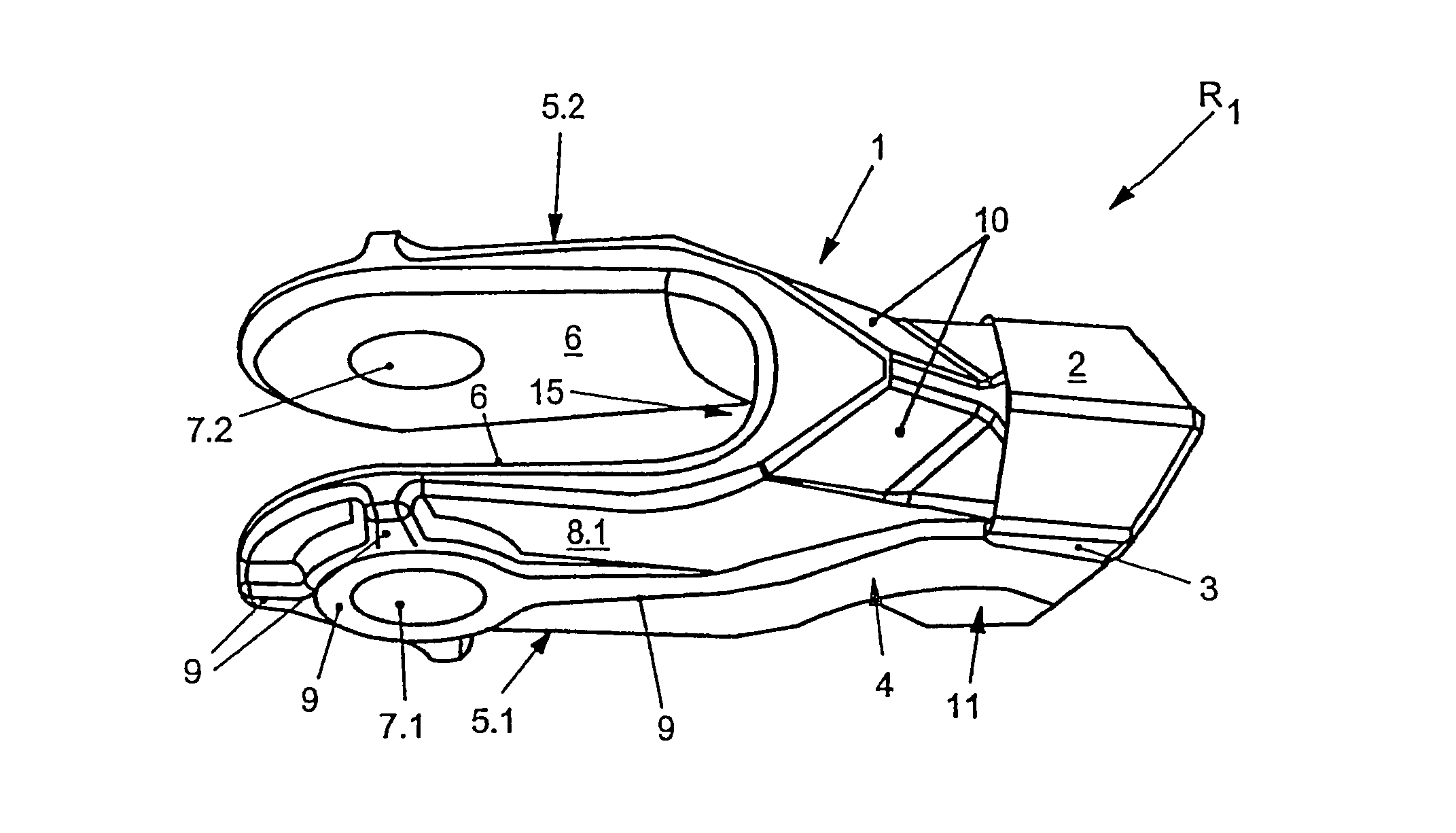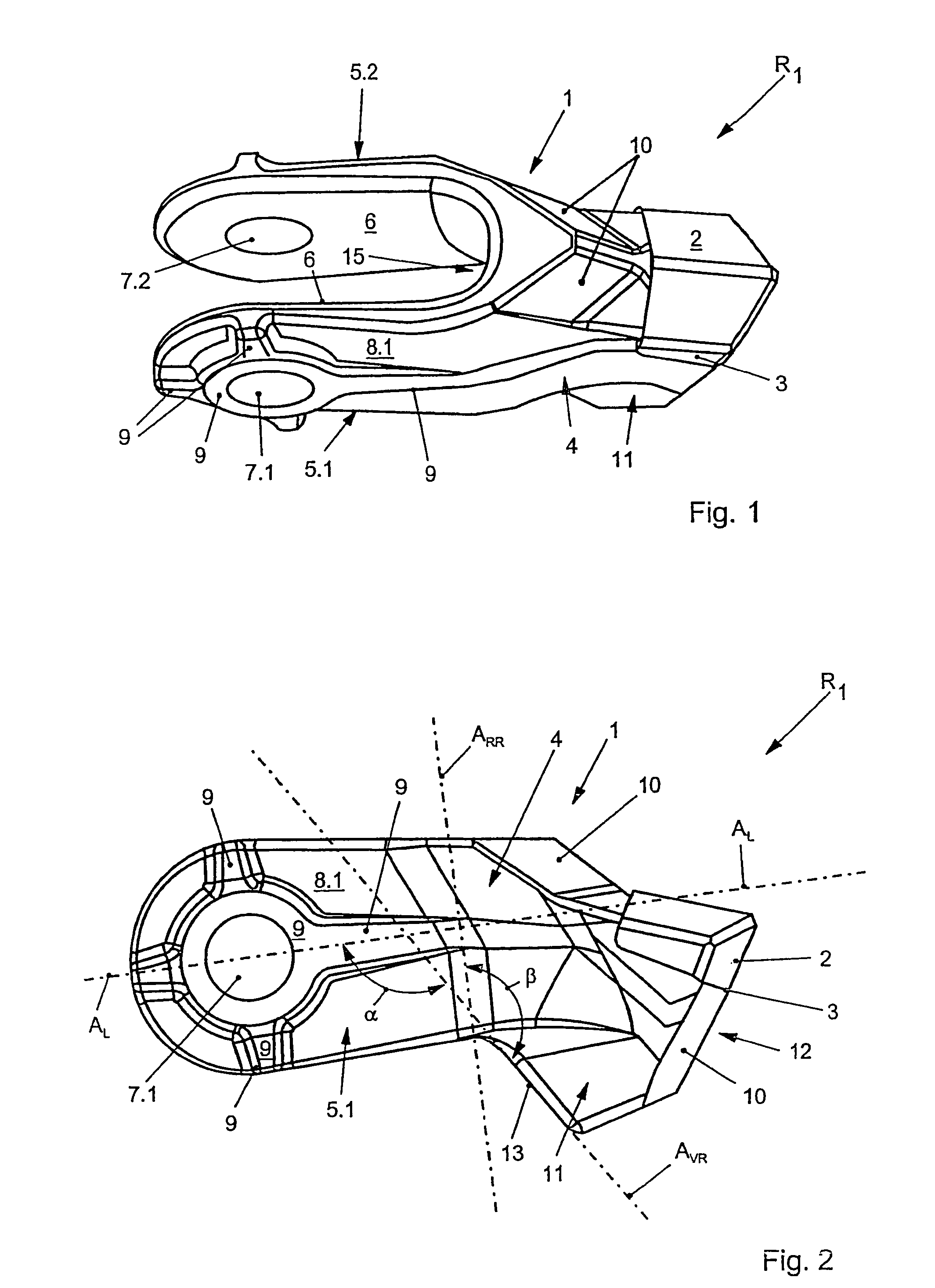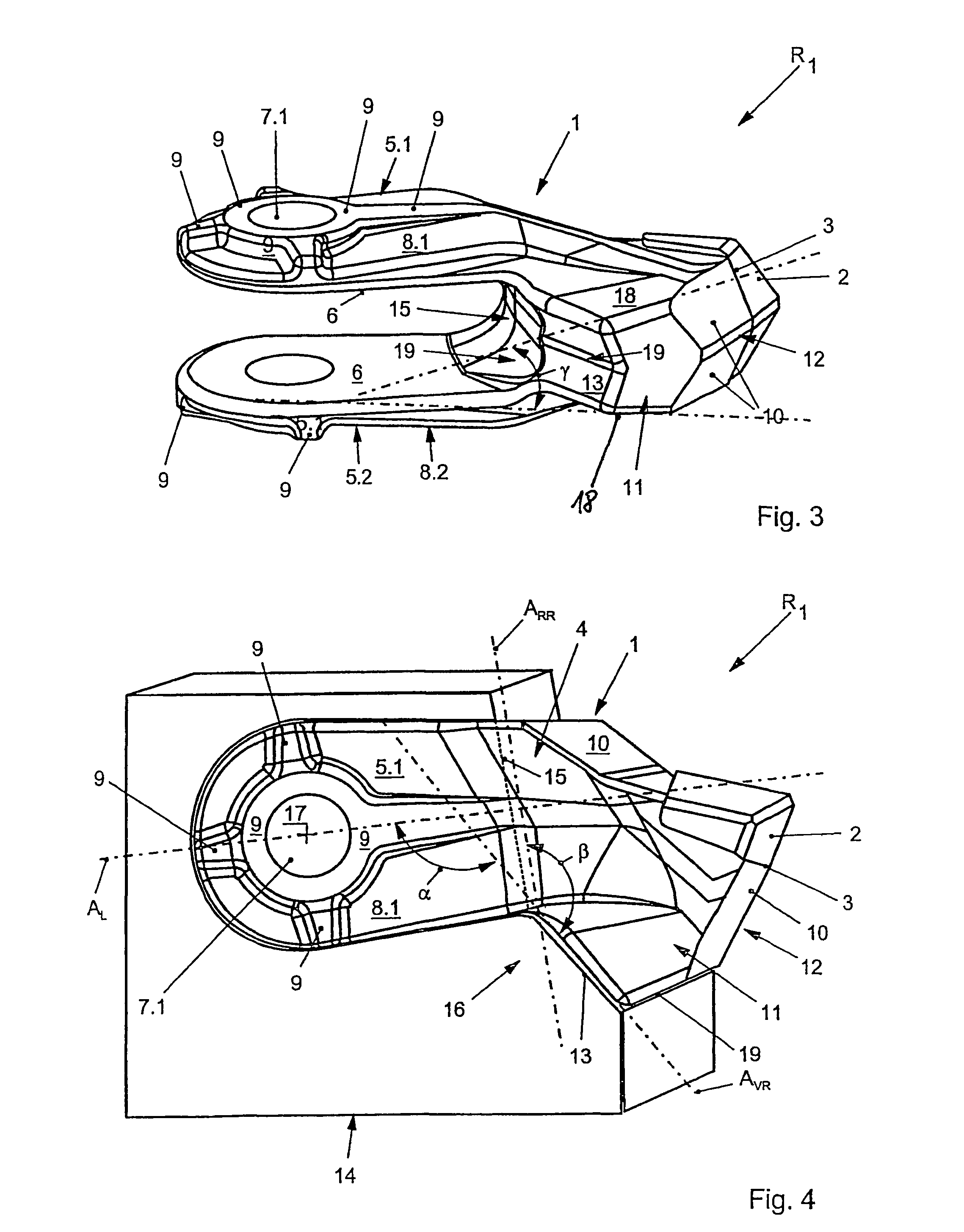Cutting element
a cutting element and cutting edge technology, applied in cocoa, food science, application, etc., can solve the problems of high too expensive production, and general wear and tear of conventional cutting elements, so as to reduce weight and friction overall during operation and during use, and achieve high stability. , the effect of reducing the degree of wear
- Summary
- Abstract
- Description
- Claims
- Application Information
AI Technical Summary
Benefits of technology
Problems solved by technology
Method used
Image
Examples
Embodiment Construction
[0024]According to FIG. 1, a cutting element R1 according to the invention has a cutter holder 1 which, in a front region, accommodates at least one cutting edge 2 on a cutter shoulder 3, which cutting edge is connected fixedly or releasably to the cutter holder 1.
[0025]The cutter holder 1 substantially comprises a body part 4 from which two spaced-apart limbs 5.1, 5.2 protrude, with the inner surfaces 6 thereof being formed parallel to each other.
[0026]In the end-side regions of the limbs 5.1, 5.2, the latter have mutually aligned holes 7.1, 7.2.
[0027]It has proven advantageous in the present invention that the two limbs 5.1, 5.2 taper slightly in their thickness from the body part 4 to the hole 7.1, 7.2.
[0028]This enables additional weight and material to be saved, with, in order to compensate for the applied forces, corresponding reinforcing profiles 9 being provided on the outside of an outer surface 8.1, 8.2 of the limbs 5.1, 5.2, said reinforcing profiles reinforcing the regio...
PUM
 Login to View More
Login to View More Abstract
Description
Claims
Application Information
 Login to View More
Login to View More - R&D
- Intellectual Property
- Life Sciences
- Materials
- Tech Scout
- Unparalleled Data Quality
- Higher Quality Content
- 60% Fewer Hallucinations
Browse by: Latest US Patents, China's latest patents, Technical Efficacy Thesaurus, Application Domain, Technology Topic, Popular Technical Reports.
© 2025 PatSnap. All rights reserved.Legal|Privacy policy|Modern Slavery Act Transparency Statement|Sitemap|About US| Contact US: help@patsnap.com



